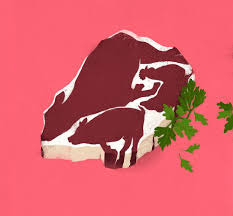Introduction to Carnism
Carnism is an ideology that categorizes animals into two distinct groups: those deemed acceptable to eat and those considered pets. As Melanie Joy explains, “carnism is the ideology that conditions people to eat certain animals, and it is a sub-ideology of speciesism” (2013). This perspective stratifies animals, valuing some as companions while others are slaughtered for consumption. The central question that arises is: Why are certain animals seen as food while others are cherished?
The Justifications for Carnism
Many proponents of carnism defend the practice by referring to it as “normal, natural, and necessary” (Joy, 2013). This line of reasoning has historically been used to justify various forms of oppression, from racism to homophobia. The ideology creates a mental and emotional hierarchy, teaching us to compartmentalize animals into different categories. Joy, in a TED Talk, described this as engaging in a behavior “completely contrary to how we would optimally function” (2017), distorting our thoughts, numbing our feelings, and contradicting our core values.
Humane Meat: Fact or Fiction?
A counter-argument within carnism is the concept of “humane meat.” Many commercial products feature labels like “free range” or “ethically raised” to convey that animals are treated well. For example, Farmer Brown’s egg cartons are adorned with bright colors and images of happy chickens, boasting “cage free” in bold letters (Olive, 2022). However, investigations have exposed poor treatment practices, including cramped conditions and the use of antibiotics to accelerate growth (Scot-Reid, 2021). A deeper look reveals that terms like “humane” or “ethically raised” lack legal definitions from regulatory bodies like the USDA or FDA, leading to ambiguous marketing claims. This has only intensified the debate, as the USDA reported over 10,000 applications for animal welfare claims in 2019 alone (Scot-Reid, 2021).
Challenging the Carnist Norm
Joy’s TED Talk emphasizes that individuals are often unaware of the ideological framework they inhabit. She argues that industrial and societal structures obscure our choices, leading many to view meat consumption as a given. Alternative movements, such as veganism, counter this view by rejecting all forms of animal cruelty and exploitation for food, fashion, or other reasons (Jordan, 2021). Joy believes that embracing veganism enables individuals to “reclaim rationality and our freedom of choice” (2017). By challenging the norm, veganism seeks to treat all animals equally, highlighting the contradiction in how society views pets versus farm animals.
Gender and Carnism
The interplay between societal norms and carnism is also seen through the lens of gender. Scholars have examined the relationship between cultural misogyny and meat consumption, noting that red meat is often associated with masculinity, while leaner meats, like chicken, are linked to femininity (Adams, 2015). This categorization not only reflects but reinforces cultural biases, questioning why some animals are considered less valuable than others. Terminology also plays a role: cows become “beef,” and pigs become “pork,” distancing the consumer from the living animal. Yet certain animals like lamb, chicken, and fish retain their original names, suggesting deeper biases tied to gender and societal expectations.
Visibility and Slaughter
One of the ways carnism is perpetuated is through the invisibility of the slaughtering process. James Fyfe’s public service announcement highlights the mistreatment of pigs, drawing attention to why they are considered acceptable for food while other animals are cherished companions. In his message, a factory farmer admits, “these animals are more intelligent than your pet dog. We wouldn’t do that to a dog” (Fyfe, 2021). This gap between how animals are treated and perceived underscores the arbitrary nature of the carnist system.
New Carnivorism and Meat Ideology
While meat consumption has often been viewed as a purely gustatory behavior, recent explorations suggest it is also ideological. The phenomenon of “New Carnivorism,” illustrated by the Danish TV show “Kill Your Favorite Dish,” highlights a shift toward making the process of meat consumption visible (Leth-Espensen, 2019). This visibility challenges the traditional carnist narrative, asking why certain animals are more acceptable to kill and eat. Studies indicate that the way people think about animals—and what they choose to consume—is deeply influenced by underlying ideologies (Monteiroa, 2017).
The Way Forward
Evidence suggests that “humane meat” is largely a myth, that societal narratives distort our perceptions, and that animal equality remains a contentious topic. While ideologies like veganism and feminism have made strides in challenging carnist beliefs, the system is deeply embedded within society. More work is needed to confront anthropocentric beliefs and to bridge the gap between living animals and the products we consume without reflection.
Carnism remains a powerful and divisive ideology, shaping societal attitudes toward animals and food. As Joy points out, the ideology is so ingrained that it requires us to question long-standing assumptions, confront societal norms, and re-examine the choices we make daily. Whether through academic research, activism, or personal reflection, challenging carnism demands a conscious effort to see beyond the labels and question the ethics of our consumption patterns.




